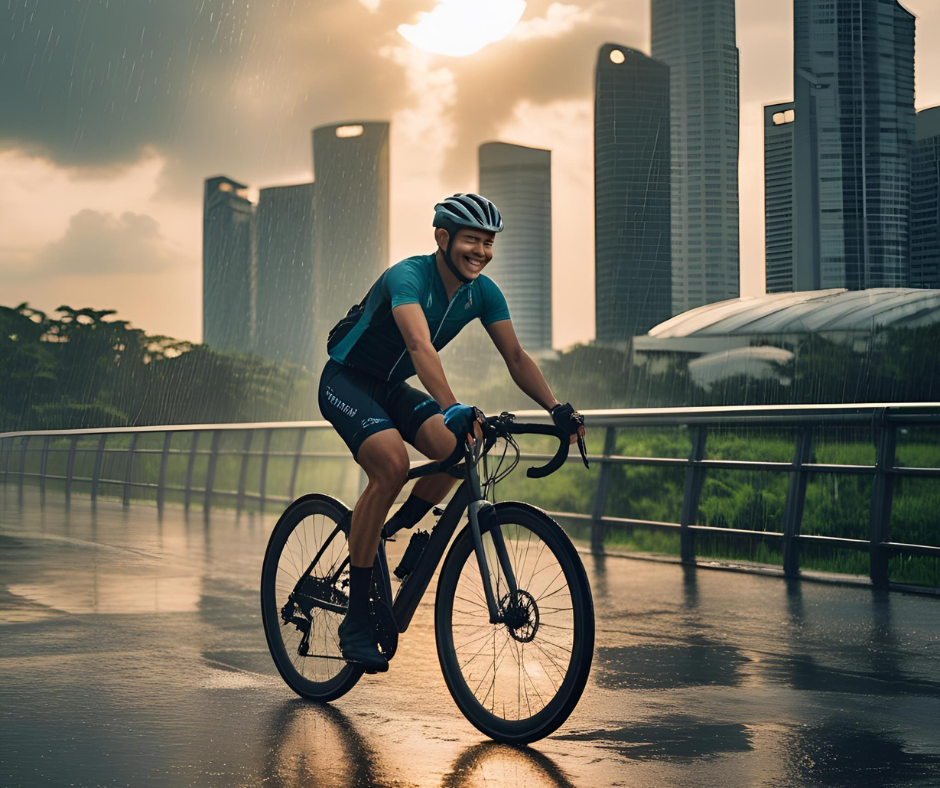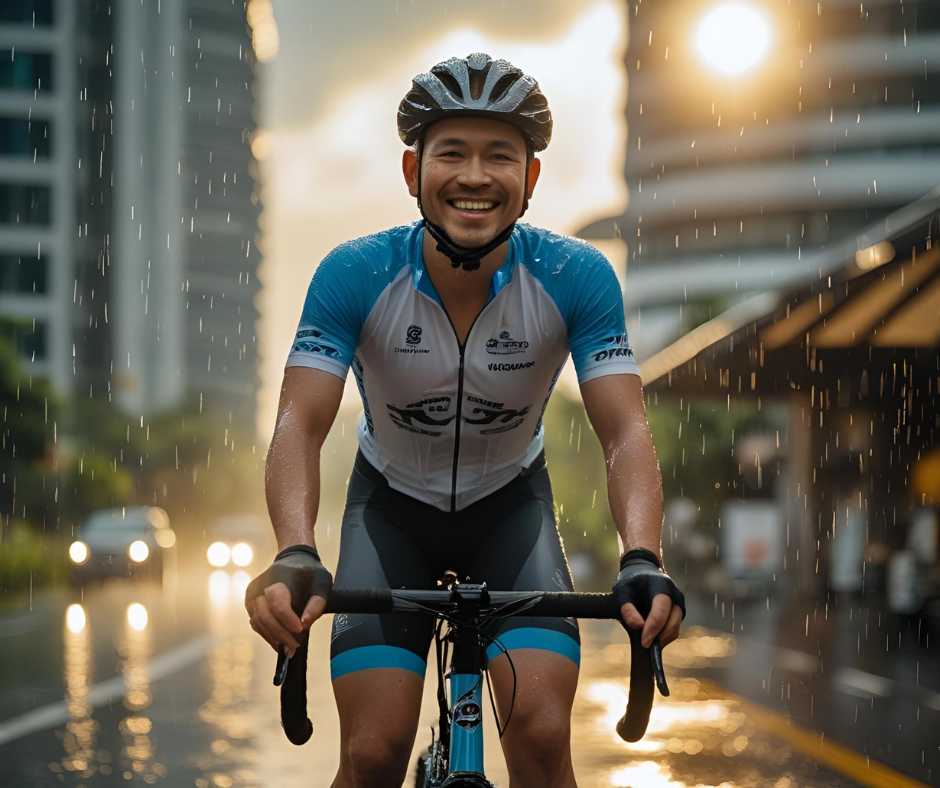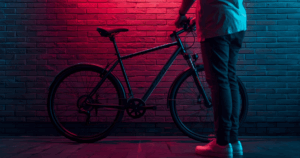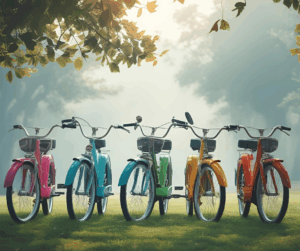Monsoon season doesn’t have to put the brakes on your biking routine—especially when you follow essential bike tips tailored for wet weather. While the rhythmic sound of rain and the cooling breeze can make your rides feel refreshing, the season also introduces a unique set of challenges. These range from slick road surfaces and poor visibility to unexpected flooding and increased wear on bike components. By equipping yourself with the right knowledge and gear, you can continue riding safely and comfortably during the rainy months. This comprehensive guide covers all the crucial bike tips—from pre-ride preparation and wet-weather gear to safe riding behavior and post-ride maintenance—to help you cycle through the monsoon season with confidence and style.
1. Prepare Your Bike for the Rain
Your bike should be as ready for the rain as you are. One of the first bike tips to remember is to rain-proof your setup before the monsoon hits. Moisture doesn’t just get you wet—it can degrade your bike’s components and affect ride quality.
Start by installing full-length fenders or mudguards on both the front and rear wheels. These accessories significantly reduce the amount of water and mud that gets sprayed onto you and your bike. This small addition makes a huge difference, especially when you’re riding through puddles or on muddy terrain.
Next, your bike’s chain and drivetrain need special attention. Rain washes away standard lubricants quickly, leaving your chain vulnerable to rust. Use a wet-weather-specific chain lube that’s formulated to stick even under constant water exposure. Reapply it after every wet ride to maintain performance.
Also, check your brakes—whether you’re using rim or disc brakes. Wet conditions reduce friction, leading to longer stopping distances. Make sure your brake pads aren’t worn out and your cables are taut. Applying these bike tips ensures your bike performs optimally, even when the weather doesn’t.
2. Wear the Right Gear for Protection and Comfort
The right clothing can make a world of difference during a rain-soaked ride. Among the most practical bike tips is investing in high-quality waterproof gear that’s also breathable. A good cycling rain jacket with ventilation flaps or mesh underarms will keep you dry without causing overheating.
Don’t overlook your lower half. Waterproof pants or cycling tights with a water-repellent coating keep your legs dry and comfortable. Some even come with reflective strips, doubling as a visibility enhancer during gloomy days.
Hands and feet, often forgotten, are just as important. Cold, wet gloves can impair your ability to brake and steer, so go for gloves with waterproof linings. Shoe covers or waterproof cycling shoes prevent water from seeping in and also keep your toes warm. Another overlooked but critical bike tip is wearing glasses with clear lenses to protect your eyes from splashing water and debris.
Dress not only for the rain but for safety and comfort. With the right gear, riding in the rain doesn’t feel like a chore—it becomes an adventure.
3. Plan Your Route Around the Weather
Riding through the same routes you take during dry weather may not always be the best idea during the monsoon. One of the smartest bike tips is to plan your route according to current weather conditions and the nature of the terrain.
Avoid low-lying areas prone to flooding and routes that may have poor drainage. Flooded roads can hide deep potholes, which can be dangerous to cyclists. Stick to well-paved and familiar paths that allow you to anticipate obstacles.
Use weather and navigation apps to help plan your ride. Tools like Google Maps or local weather services often show traffic conditions and rainfall intensity in real time. These digital aids are increasingly becoming part of everyday bike tips, helping you adapt quickly to sudden changes.
Always have a backup route. In case the rain intensifies, you should know the quickest path to the nearest shelter or MRT station. With good planning, you can maintain both your schedule and safety.
4. Modify Your Riding Style for Wet Roads
How you ride is just as important as what you ride. One of the most vital bike tips for monsoon cycling is to alter your riding technique to accommodate slippery surfaces and limited traction.
Start by reducing your speed. Wet roads decrease tire grip, increasing the chances of skidding or hydroplaning. Ride at a controlled, steady pace to avoid sudden maneuvers. When approaching a turn, slow down well in advance and keep your body weight centered to maintain stability.
Braking requires extra care in the rain. Brake earlier and more gently than you would in dry conditions. Abrupt braking can lock your wheels, especially on slippery terrain. If you’re using rim brakes, it might take a second longer for them to engage in the wet—plan accordingly.
Ride in a slightly more upright position to improve your visibility and balance. Look ahead to anticipate puddles or obstacles. These behavior-driven bike tips are critical for staying upright and in control during wet commutes or workouts.
5. Upgrade Your Tires for Maximum Grip
Tires are your only point of contact with the road, so it’s logical that one of the best bike tips for monsoon riding is to upgrade to wet-weather-optimized tires. Standard road tires might be too slick and narrow to offer safe traction on wet pavement.
Look for tires that are slightly wider than your usual ones. Wider tires distribute your weight over a larger surface area, which enhances grip. Another great tip is to lower your tire pressure by about 5–10 PSI. This increases the tire’s contact patch and helps you maintain better control over slippery roads.
Choose tires with visible treads rather than slicks. A good tread pattern channels water away from the surface of the tire, reducing the risk of hydroplaning. These specialized tires may seem like a small upgrade, but they’re one of the most effective bike tips you can adopt for rainy-day rides.
6. Enhance Visibility with Lights and Reflective Gear
Visibility is dramatically reduced during a downpour, making it harder for both cyclists and drivers to see each other. Among the most lifesaving bike tips is using bright LED lights on both the front and back of your bike.
Turn them on not just at night but anytime you’re riding in overcast or rainy conditions. Even in daylight, a blinking red tail light and a white front light improve your visibility substantially.
Add reflective tape to your helmet, bag, and bike frame. Consider wearing a high-visibility vest over your waterproof jacket. Reflective ankle bands or wheel spoke reflectors also work wonders, especially in low-light conditions.
Lighting isn’t just about seeing; it’s about being seen. Incorporating visibility-focused bike tips can make the difference between a safe ride and a close call.
7. Protect Your Belongings from the Rain
You’re not just protecting yourself during a ride—you’re also protecting your gear. A simple yet often ignored set of bike tips involves waterproofing your belongings.
Use a waterproof backpack or a dry bag with welded seams and roll-top closures. For extra protection, put valuables like electronics, documents, or a spare set of clothes in zip-lock bags inside your main bag.
You can also attach waterproof panniers or handlebar bags to your bike. These not only offer extra storage but keep items easily accessible. Consider frame bags with internal compartments for organizing your essentials without exposing them to rain.
Protecting your things ensures that the end of your ride doesn’t come with soaked wallets, phones, or ruined documents.
8. Clean and Maintain After Every Ride
The final stage of any rainy ride is maintenance. The wet conditions introduce grime, sand, and moisture that can severely degrade your bike if left unattended. One of the most essential bike tips is post-ride care.
As soon as you get home, wipe down your entire bike with a clean, dry cloth. Pay close attention to the chain, cassette, brakes, and derailleurs—these are especially vulnerable to rust. If your drivetrain feels gritty, do a quick rinse with warm water and re-lubricate the chain immediately.
Clean your brake pads and rims to prevent abrasive dirt from wearing them down. If you have disc brakes, inspect the rotor for grit or rust. Let your shoes and gloves air dry completely before the next ride to avoid mold buildup.
Consistently following these post-ride bike tips ensures your gear lasts longer and performs at its best—rain or shine.
9. Mental Preparation: Stay Calm and Confident
Rainy rides can test more than just your physical limits—they also test your mental resolve. That’s why one of the more underrated but equally important bike tips is preparing yourself mentally for the ride.
Expect longer commute times and unpredictable road conditions. Prepare for the possibility of turning back or taking alternative transport. Stay flexible, and don’t let frustration cloud your judgment.
Adopt a positive mindset. Many cyclists find that monsoon rides help them feel more connected to nature and attuned to their environment. The sound of rain, the fresh air, and the less crowded roads can be incredibly soothing if approached with the right attitude.
By staying focused and open-minded, you’ll find the joy in monsoon cycling—despite the challenges.
Conclusion
Monsoon season doesn’t have to mean storing your bike away until the skies clear. With the right strategies and a proactive mindset, you can make every rainy ride not only manageable but genuinely enjoyable. From choosing the right tires and wearing weather-appropriate gear to planning your route and maintaining your bike afterward, these 25 bike tips are designed to help you stay safe, dry, and confident on the road.
Rain may fall, but your biking habits don’t have to. Use these tips to power through puddles, master wet conditions, and experience a new dimension of riding—one filled with resilience, preparedness, and even a splash of adventure.





